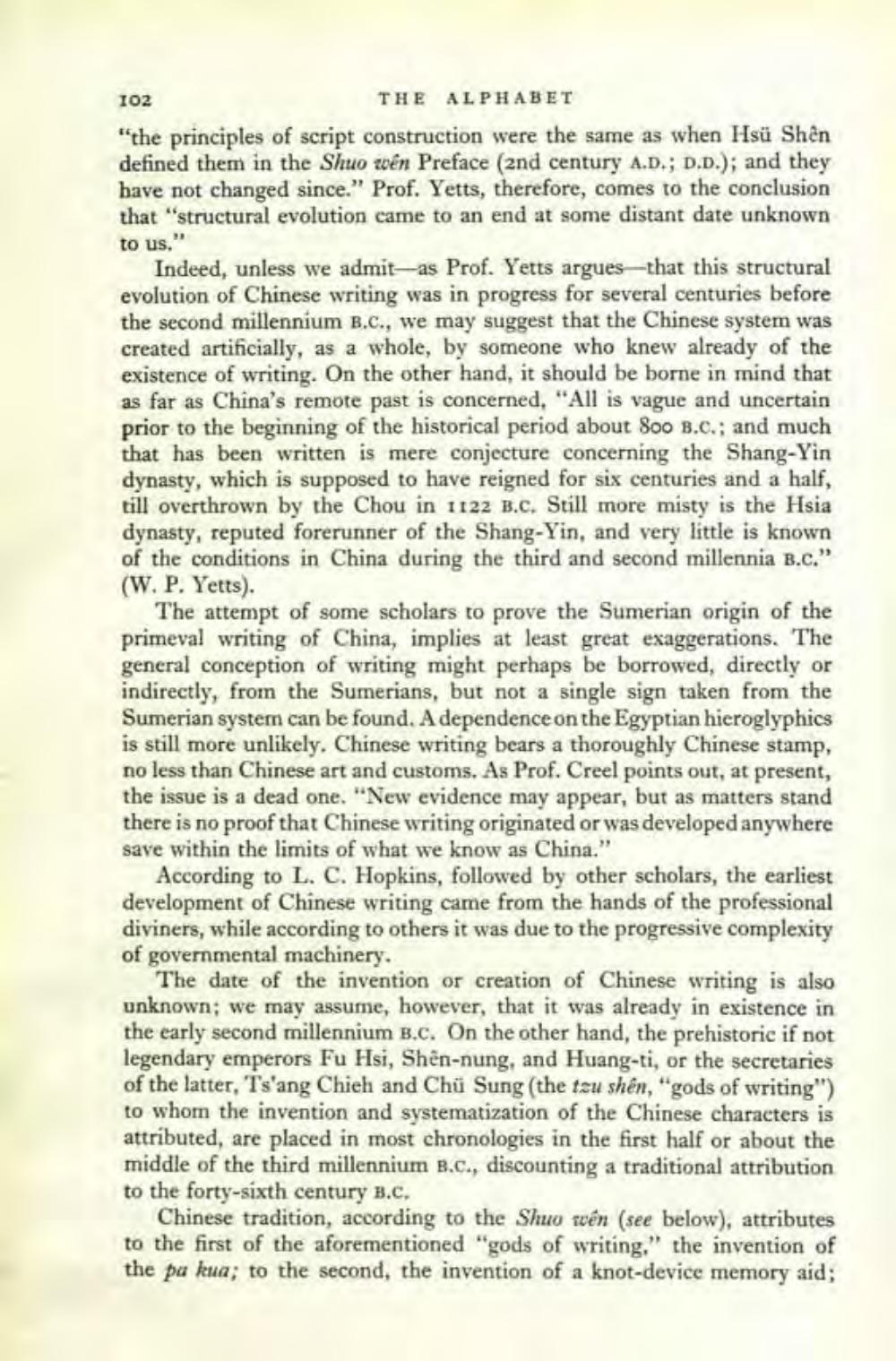________________
102
THE ALPHABET "the principles of script construction were the same as when Hsü Shen defined them in the Shuo wen Preface (2nd century A.D.; D.D.); and they have not changed since.” Prof. Yetts, therefore, comes to the conclusion that "structural evolution came to an end at some distant date unknown to us."
Indeed, unless we admit—as Prof. Yetts argues that this structural evolution of Chinese writing was in progress for several centuries before the second millennium B.C., we may suggest that the Chinese system was created artificially, as a whole, by someone who knew already of the existence of writing. On the other hand, it should be borne in mind that as far as China's remote past is concerned, "All is vague and uncertain prior to the beginning of the historical period about 800 B.C., and much that has been written is mere conjecture concerning the Shang-Yin dynasty, which is supposed to have reigned for six centuries and a half, till overthrown by the Chou in 1122 B.C. Still more misty is the Hsia dynasty, reputed forerunner of the Shang-Yin, and very little is known of the conditions in China during the third and second millennia B.C." (W. P. Yetts).
The attempt of some scholars to prove the Sumerian origin of the primeval writing of China, implies at least great exaggerations. The general conception of writing might perhaps be borrowed, directly or indirectly, from the Sumerians, but not a single sign taken from the Sumerian system can be found. A dependence on the Egyptian hieroglyphics is still more unlikely. Chinese writing bears a thoroughly Chinese stamp, no less than Chinese art and customs. As Prof. Creel points out, at present, the issue is a dead one. "New evidence may appear, but as matters stand there is no proof that Chinese writing originated or was developed anywhere save within the limits of what we know as China."
According to L. C. Hopkins, followed by other scholars, the earliest development of Chinese writing came from the hands of the professional diviners, while according to others it was due to the progressive complexity of governmental machinery.
The date of the invention or creation of Chinese writing is also unknown; we may assume, however, that it was already in existence in the early second millennium B.C. On the other hand, the prehistoric if not legendary emperors Fu Hsi, Shen-nung, and Huang-ti, or the secretaries of the latter, Ts'ang Chieh and Chü Sung (the tsu shên, "gods of writing") to whom the invention and systematization of the Chinese characters is attributed, are placed in most chronologies in the first half or about the middle of the third millennium B.C., discounting a traditional attribution to the forty-sixth century B.C.
Chinese tradition, according to the Skuo tuên (see below), attributes to the first of the aforementioned "gods of writing," the invention of the pa kua; to the second, the invention of a knot-device memory aid;




